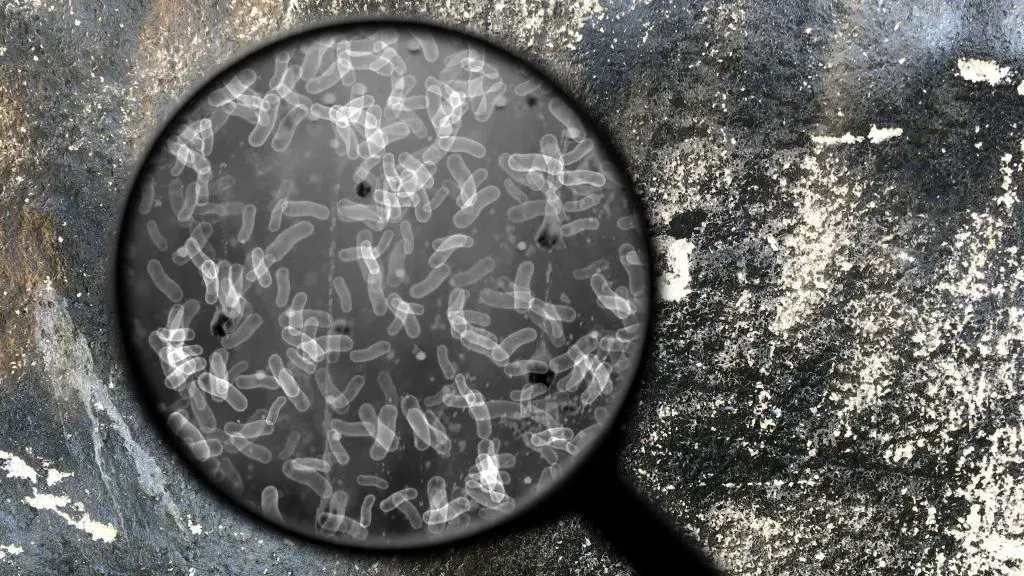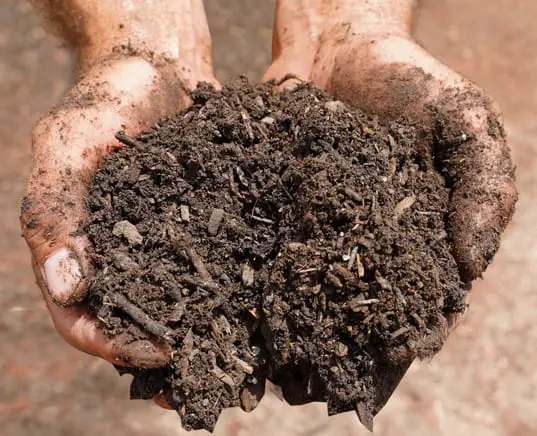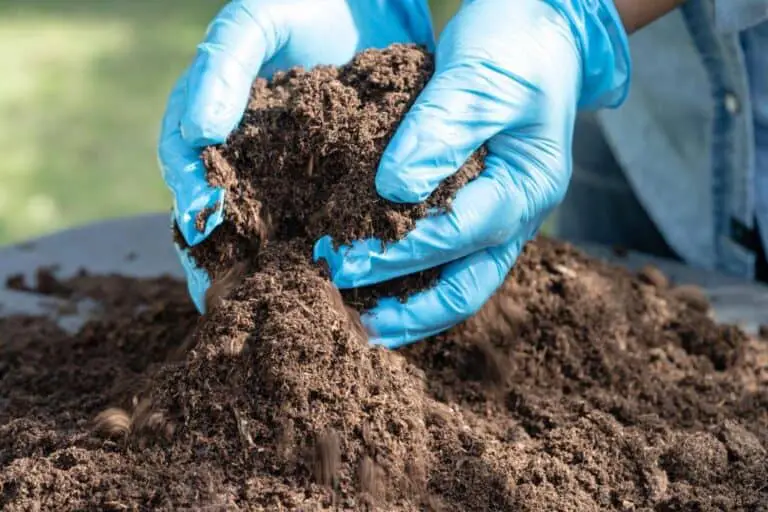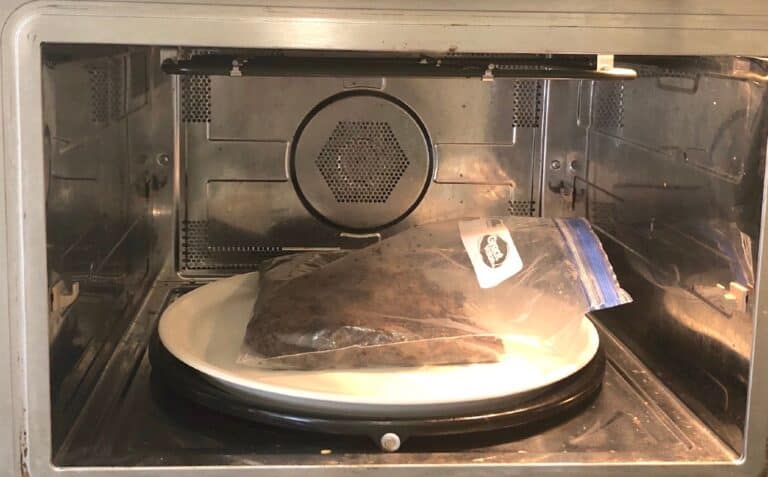How Do Bacteria and Microorganisms Increase Soil Fertility?

When we think of a thriving garden or a bountiful crop field, our minds often conjure images of lush greenery, vibrant blooms, and hearty vegetables. But beneath the surface, hidden from plain sight, there’s a bustling world of microorganisms, an intricate network of bacteria, and tiny life forms that are the unsung heroes of soil fertility.
In this journey into the mysterious depths of the earth, we’ll uncover the remarkable story of how bacteria and microorganisms labor tirelessly to transform ordinary soil into a fertile haven for plants. It’s a tale of symbiosis and collaboration, where these minuscule organisms play the role of ecological magicians, conjuring up essential nutrients and vitalizing the very foundation of life on our planet.
From nitrogen-fixing wizards to mycorrhizal allies, we’ll explore the fantastic cast of characters that make this underground theater of nature come alive. Together, we’ll unlock the secrets of their profound impact on soil fertility, revealing how their invisible dance powers the growth of the green world above.
So, let’s dig deep into the earth’s secrets and discover how these tiny wonders make our world bloom.
Introduction to Soil Fertility
Soil fertility is the cornerstone of successful agriculture, and it hinges on the soil’s ability to supply vital nutrients and create a favorable habitat for plants to flourish. This fundamental concept underpins the entire realm of farming, exerting a direct impact on crop productivity, the well-being of plants, and the overall health of ecosystems.
However, the intriguing aspect of soil fertility lies hidden from plain view—the unsung heroes of fertile soil are minuscule in size. Bacteria and microorganisms, too tiny to be seen with the naked eye, play a pivotal role in enhancing soil fertility.
Their contribution is nothing short of astounding, as they engage in a complex function beneath the Earth’s surface, breaking down organic matter, recycling nutrients, and fostering a harmonious environment for plant roots.
In this fascinating world of soil fertility, invisible microorganisms have a lot of power. In the end, they decide how well agriculture works and how well our ecosystems do. Understanding and harnessing their potential is key to sustainable farming and a thriving planet.
How Do Bacteria and Microorganisms Increase Soil Fertility?

Bacteria and microorganisms play a crucial role in increasing soil fertility. Here are some ways in which they do so:
- Improving soil structure: Some bacteria and fungi produce substances during organic matter decomposition that chemically and physically bind soil particles into micro-aggregates. The hyphal strands of fungi can cross-link soil particles, helping to form and maintain aggregates. Soil animals also increase pores by tunneling through soil and increase aggregation by ingesting soil.
- Recycling of soil nutrients: Bacteria perform many important ecosystem services in the soil, including recycling soil nutrients. Soil bacteria form microaggregates in the soil by binding soil particles together with their secretions. These microaggregates are like the building blocks for improving soil structure. Improved soil structure increases water infiltration and increases water-holding capacity of the soil.
- Nitrogen fixation: Some bacteria, such as Rhizobium, are symbiotic with leguminous plants and increase soil fertility by converting atmospheric nitrogen into a form that plants can use.
- Promoting plant growth: Free-living soil bacteria beneficial to plant growth, usually referred to as plant growth-promoting rhizobacteria (PGPR), are capable of promoting plant growth by colonizing the plant root. Soil bacteria can also stimulate plant growth through the production of plant hormones.
- Controlling plant pathogens: Some organisms in the soil control the spread of pathogens. For instance, certain protozoa that eat pathogenic fungi reduce the prevalence of some pathogenic fungi in soil.
The soil food web contains many relationships like this that decrease the abundance of plant pathogens.
Types of Soil Microorganisms
Let’s begin by understanding the microscopic heroes that inhabit the soil. Bacteria and microorganisms are incredibly diverse, with various species specialized for different tasks.
Some are decomposers, breaking down organic matter, while others are mutualists, forming symbiotic relationships with plants. Their combined efforts result in a nutrient-rich environment that plants thrive in.
1. Nitrogen-Fixing Bacteria
Table 1: Nitrogen-Fixing Bacteria and Their Impact
| Bacteria | Contribution to Soil Fertility |
| Rhizobium | Forms symbiotic relationships with legumes, converting atmospheric nitrogen into a usable form for plants. |
| Azotobacter | Free-living bacteria that fix atmospheric nitrogen, making it available for various crops. |
| Frankia | Forms symbiotic associations with actinorhizal plants, aiding in nitrogen fixation. |
Nitrogen is an essential element for plant growth, and it often limits productivity in agricultural systems. Nitrogen-fixing bacteria, like Rhizobium and Azotobacter, play a pivotal role in addressing this issue. They convert atmospheric nitrogen into ammonia or other forms that plants can readily absorb. This natural nitrogen enrichment process reduces the need for synthetic fertilizers, which can harm the environment when used excessively.
2. Mycorrhizal Fungi
Table 2: Mycorrhizal Fungi and Their Benefits
| Fungi | Role in Soil Fertility |
| Arbuscular mycorrhizae | Enhance nutrient uptake in plants, particularly phosphorus and micronutrients. |
| Ectomycorrhizae | Commonly associated with trees, aiding in the absorption of nutrients and water. |
| Ericoid mycorrhizae | Form symbiotic relationships with Ericaceae plants, facilitating nutrient acquisition. |
Mycorrhizal fungi form mutually beneficial partnerships with plants. These fungi extend their hyphae into the soil, effectively increasing the plant’s root surface area. This expansion enhances the plant’s ability to absorb water and nutrients, such as phosphorus and micronutrients, from the soil. Mycorrhizal associations are particularly crucial in nutrient-poor soils, where they can significantly improve plant health and yield.
3. Decomposers
Decomposers, like saprophytic fungi and certain bacteria, are nature’s recyclers. They break down dead plant and animal matter, returning essential nutrients to the soil in a form that plants can use. This decomposition process not only cleans up organic debris but also maintains a nutrient cycle that sustains life in ecosystems.
Microbial Activity and Soil Structure
The activity of countless microorganisms in soil shapes it into a dynamic ecosystem rather than just a lifeless substrate. Microbial activity, particularly that of bacteria and fungi, plays a pivotal role in creating and maintaining soil structure.
The Importance of Soil Structure
- Aeration: Microorganisms burrow through the soil, creating channels that allow air to penetrate. This aeration is crucial for root respiration and the survival of beneficial soil organisms.
- Water Retention: Soil structure influences water retention. A well-structured soil can hold moisture effectively, reducing the risk of drought stress for plants.
- Root Penetration: Soil structure impacts root penetration. Loose, well-structured soil allows roots to explore and extract nutrients efficiently.
Sustainable Agriculture and Microbial Practices
As modern agriculture grapples with the challenges of sustainability and environmental impact, microbial practices emerge as a beacon of hope. These practices harness the power of bacteria and microorganisms to improve soil fertility organically while reducing the need for chemical fertilizers.
The Benefits of Microbial Practices
- Reduced Chemical Dependency: Microbial practices decrease the reliance on synthetic fertilizers and pesticides, lowering the ecological footprint of farming.
- Enhanced Nutrient Cycling: By promoting nutrient cycling through microorganisms, these practices improve nutrient use efficiency in agriculture.
- Soil Health: Healthy soil teeming with beneficial microorganisms is more resilient to stressors like drought and disease.
Implementing Microbial Practices
Farmers can adopt microbial practices such as organic composting, cover cropping, and microbial inoculants to promote soil health and fertility. These techniques are integral to sustainable farming, offering a path toward more resilient and eco-friendly agriculture.
In this journey through the microscopic world beneath our feet, we’ve uncovered the pivotal roles of bacteria and microorganisms in enhancing soil fertility. From unlocking phosphorus to shaping soil structure, regulating pH, suppressing diseases, and enabling sustainable agriculture, these tiny but mighty allies continue to shape the future of farming.
Now, as we conclude our exploration, we’ll address common questions and concerns regarding the use of bacteria and microorganisms in agriculture.
How Can I Encourage the Growth of Beneficial Bacteria in My Garden Soil?
Boosting the presence of beneficial bacteria in your garden soil is essential for nurturing healthy plants and maintaining a thriving ecosystem. To achieve this, start by enriching your soil with organic matter. This could include compost, leaf litter, or well-rotted manure. Organic matter acts as a feast for beneficial bacteria, providing them with the nutrients they need to multiply and thrive.
Another vital step is to minimize soil disturbance. Excessive tilling and digging can disrupt the delicate balance of microbial life in your soil. Opt for no-till or reduced-till gardening methods to preserve the habitat of these helpful microorganisms.
Consider incorporating compost or biofertilizers containing beneficial microorganisms into your gardening routine. These products introduce a diverse array of friendly bacteria to your soil, enhancing its overall health and fertility. By following these practices, you’ll create an environment where beneficial bacteria can flourish, ensuring your garden thrives and remains resilient against pests and diseases.
Conclusion
In the realm of soil fertility, the role of microorganisms is nothing short of remarkable. These often overlooked, tiny creatures perform an intricate dance within the soil food web, influencing everything from nitrogen fixation to decomposition. It’s in this intricate web that the foundation of agricultural productivity is laid.
At the heart of it all are the nitrogen-fixing bacteria, which play a pivotal role in enriching the soil with this essential nutrient. Their partnership with plants is a testament to the synergy between nature’s elements. Another key player in this microbial orchestra is mycorrhizal fungi, which form a beneficial symbiotic relationship with plants, enhancing nutrient uptake and overall growth.
The benefits of bacteria in agriculture are manifold. They break down organic matter, releasing vital nutrients that plants crave. Moreover, they contribute to the overall health and diversity of soil microbial communities, ensuring a thriving ecosystem beneath the surface.
To cultivate sustainable soil fertility practices, it’s imperative to understand and harness the power of these microscopic heroes. By nurturing organic matter and promoting microbial diversity, we create an environment where soil health flourishes.
However, it’s not all harmony in the world of soil microorganisms. Harmful microorganisms can wreak havoc, causing diseases and imbalances. As stewards of the land, it’s our responsibility to strike a balance, working in harmony with the soil’s microscopic inhabitants to ensure a prosperous future for agriculture and the planet. In doing so, we honor the unsung heroes of soil fertility and pave the way for bountiful harvests and a sustainable future.
FAQs on Role of Microorganisms in Soil Fertility
What are the benefits of microorganisms in soil?
Microorganisms benefit soil by enhancing nutrient availability, improving soil structure, aiding in decomposition, and forming symbiotic relationships with plants, ultimately increasing overall soil health and fertility.
Can soil fertility be improved naturally with microorganisms?
Yes, soil fertility can be naturally improved with microorganisms through practices like adding organic matter, reducing tillage, and using biofertilizers, reducing the need for chemical interventions.
Are there any harmful microorganisms in the soil that affect fertility?
Some harmful microorganisms, like certain pathogens, can negatively affect soil fertility by causing diseases in plants or disrupting the soil ecosystem. Proper soil management can help mitigate these risks.
What are some common signs of poor soil fertility?
Signs of poor soil fertility include stunted plant growth, yellowing leaves, reduced crop yield, and an inability to retain moisture in soil.
Is it necessary to use chemical fertilizers in conjunction with microbial practices?
Microbial practices can reduce the reliance on chemical fertilizers, but the need for them depends on specific soil conditions and crop requirements.
How long does it take for bacteria and microorganisms to improve soil fertility noticeably?
Improvement in soil fertility with bacteria and microorganisms can be noticeable within a growing season but may take several years for significant changes.
Can microbial treatments be applied in both conventional and organic farming practices?
Yes, microbial treatments can be applied in both conventional and organic farming practices, offering sustainable soil fertility enhancement options.






